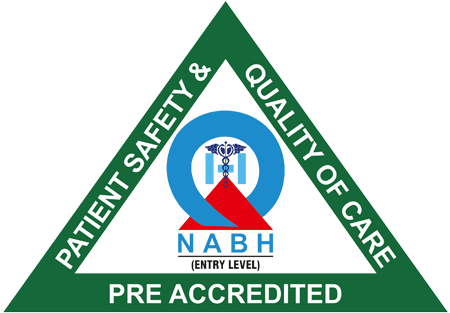Pregnancy is an exciting and special time, but it can also bring challenges, especially when it comes to sleeping. You probably already know how important sleep is, but it becomes essential during pregnancy.
Quality sleep helps your body recharge, keeps you healthy, and supports your growing baby’s development. But with all the changes happening in your body, getting a good night’s rest isn’t always simple. That’s why understanding the best sleeping positions and learning how to make yourself comfortable can make a big difference.
Here’s everything you need to know about sleeping positions during pregnancy and how to make bedtime better for both you and your baby.
Why Sleep Is Crucial During Pregnancy?
Sleep does so much more than keep you energized. It helps your body repair itself, builds your immune system, and ensures that your baby gets the oxygen and nutrients they need to grow. Did you know that not getting enough sleep can increase the risk of things like preterm labor, gestational diabetes, and even high blood pressure? That’s how vital rest is for your pregnancy.
But sleeping during pregnancy often comes with challenges. Hormonal changes can wake you up in the middle of the night, your growing baby bump can make it hard to get comfortable, and things like heartburn, leg cramps, or needing to pee frequently can keep you tossing and turning. Many women also wake up worrying about whether their sleeping position might harm their baby. The good news? Understanding how to position yourself safely and comfortably can help with these concerns.
Why Sleeping Position Matters During Pregnancy?
Your body is doing incredible things to create a new life, but all these changes can affect your sleep. During pregnancy, your blood must circulate to provide the baby with oxygen and nutrients through the placenta. Some positions can help this process, while others may interfere with blood and oxygen flow.
For example, if you lie flat on your back during later pregnancy, the weight of your uterus can press down on vital blood vessels, like the vena cava, which is the large vein that carries blood to your heart. This can make you feel dizzy, lower your blood pressure, or even reduce blood flow to your baby.
Sleeping on your stomach is also tricky after your first trimester. While your baby is well-protected inside the womb, your growing bump can make stomach sleeping uncomfortable and impractical.
The right sleeping position isn’t just about comfort. It’s about creating the safest environment for both you and your little one.
Best Sleeping Positions During Pregnancy (Trimester-Wise Guide)
a. First Trimester (Weeks 1–12)
The first trimester is when your body starts to adapt to pregnancy, but you may not feel physically limited yet. Your baby is still tiny, and your uterus is tucked safely inside your pelvis. At this point, you can sleep any way that feels comfortable. Yes, even on your stomach!
If you enjoy stomach sleeping, you can keep doing it for now, but this is a great time to start practicing new sleeping habits for the months to come. Doctors recommend that pregnant women sleep on their sides as the pregnancy progresses, so why not get an early start? Try placing a pillow between your knees or under your bump for added comfort.
If you’re feeling extra tired during your first trimester (totally normal!), listen to your body and rest as much as you need. Take naps and go to bed earlier if nighttime sleep becomes tricky.
b. Second Trimester (Weeks 13–26)
By the second trimester, your belly starts to grow, and you might notice that sleeping on your stomach or back feels less comfortable than before. This is the perfect time to transition to side sleeping.
Doctors usually recommend sleeping on your left side because it helps blood and nutrients flow easily to the placenta. Plus, this position keeps pressure off your liver, kidneys, and spine. But don’t panic if sleeping on your left side isn’t always doable. Sleeping on your right side is also safe and is a great backup position.
To sleep even more comfortably during this stage, use pillows to support your body. Place one under your belly, one between your knees, and another behind your back. These extra supports can help reduce muscle strain and keep you from rolling onto your back during the night.
c. Third Trimester (Weeks 27–40)
The third trimester is when finding a comfy sleeping position can feel downright difficult. Your baby bump is big, and your body may ache in places you didn’t even know existed! At this point, sleeping on your left side is more important than ever.
Why the left side? It’s because it improves blood flow to your heart and your baby and keeps your uterus from pressing on the vena cava. If you sleep on your back now, you may wake up feeling lightheaded or experience shortness of breath. Experts also recommend avoiding stomach sleeping, which is practically impossible by now because of your bump.
To make sleep easier, consider investing in a pregnancy pillow. These large, C-shaped or U-shaped pillows are lifesavers when it comes to supporting your belly and back. You can also try slightly elevating your upper body with extra pillows if heartburn becomes an issue.
Ensure a safe and comfortable pregnancy with expert guidance from Shenoy Hospitals. Schedule a consultation today!”
Is Sleeping on the Left Side Really the Best?
If you search for pregnancy tips online, you’ll probably see the phrase “left-side sleeping” everywhere. That’s because it’s often considered the safest position for expecting moms. It helps with blood circulation, ensuring your baby receives plenty of oxygen, while also reducing pressure on your liver and kidneys.
At the same time, don’t stress if you wake up on your right side or even on your back. Your body usually gives you signals if something isn’t right, like discomfort or dizziness, nudging you to shift positions naturally. The goal is not perfection but to spend most of your time sleeping on your side, especially as your pregnancy progresses.
Sleeping Positions to Avoid & Their Risks
While some positions are safe, others can pose risks as your pregnancy advances.
- Sleeping on your back: During the second and third trimesters, back sleeping can put pressure on the vena cava and restrict blood flow. It may also cause dizziness, breathing issues, or even back pain.
- Sleeping on your stomach: Though this position is fine in the early weeks, it becomes unsafe and nearly impossible as your belly grows.
- Semi-reclined sleeping: Propping yourself up on pillows might feel good at first, but spending hours this way can affect circulation. Instead, try side-sleeping with additional support.
How to Adjust & Improve Sleep Comfort During Pregnancy?
Pregnancy can be tough on your body, so finding ways to make yourself comfortable is key to better sleep.
- Use pregnancy pillows: These specially designed pillows can help support your back, belly, and hips. Look for one that suits your sleeping style – C-shaped pillows are great for side sleepers, while U-shaped ones provide all-around support.
- Upgrade your mattress: A firmer mattress or mattress topper can help distribute your weight evenly and support your growing body.
- Wind down before bed: Create a relaxing nighttime routine. A warm bath, calming music, or light stretching can help your body relax.
- Address common issues: If heartburn keeps you up, try sleeping slightly reclined. If leg cramps are a problem, make sure you’re well-hydrated and get extra magnesium (ask your doctor first!).
- Stick to a schedule: Going to bed and waking up at the same time every day can help regulate your sleep cycle.
FAQs About Sleeping Positions in Pregnancy
1. Can I still sleep on my stomach if it feels okay?
Yes, in early pregnancy (up to about 12 weeks), stomach sleeping is safe. But as your bump grows, start transitioning to side sleeping.
2. What happens if I wake up on my back?
Don’t panic! Just roll onto your side when you realize it. Your body will usually alert you before any harm is done.
3. Is left-side sleeping always necessary?
It’s the most recommended position, but sleeping on your right side is fine too. Just avoid back sleeping for long periods as your pregnancy advances.
4. Can poor sleeping positions hurt my baby?
While certain positions may increase risks, there are usually other factors at play. Following safe sleep practices can help reduce concerns, but don’t hesitate to consult your doctor if you’re unsure.
5. What about twins?
If you’re expecting twins, sleeping on your side (preferably the left) is even more important to ensure proper circulation. More pillows will also come in handy.
Final Thoughts
When you’re pregnant, sleep is more than just rest – it’s an important part of staying healthy and helping your baby grow. While left-side sleeping is often the gold standard, the most important thing is to listen to your body and find positions that feel safe and manageable for you. Don’t forget to use pillows, invest in a supportive mattress, and create a relaxing bedtime routine to make sleep a little easier.
And always remember, if you have concerns, your doctor is your best resource for personalized advice. Sweet dreams, and here’s to a happy, healthy pregnancy! Visit the Best Hospitals in West Marredpally for top-quality pregnancy support. Book your appointment today!”
Share:



